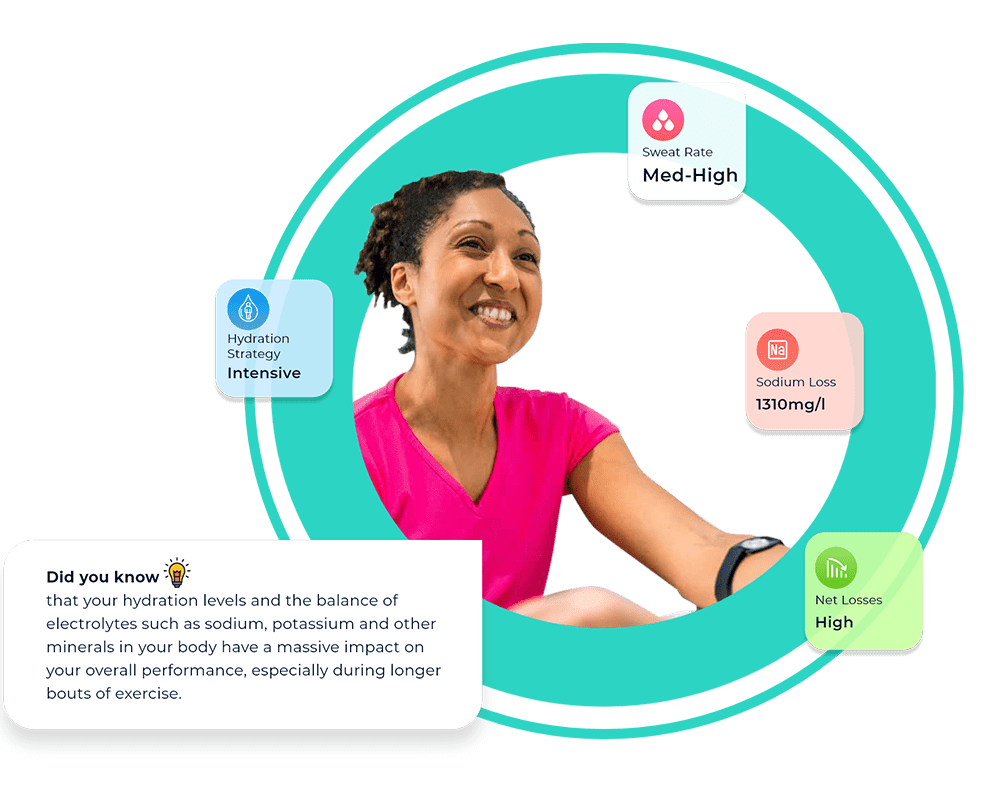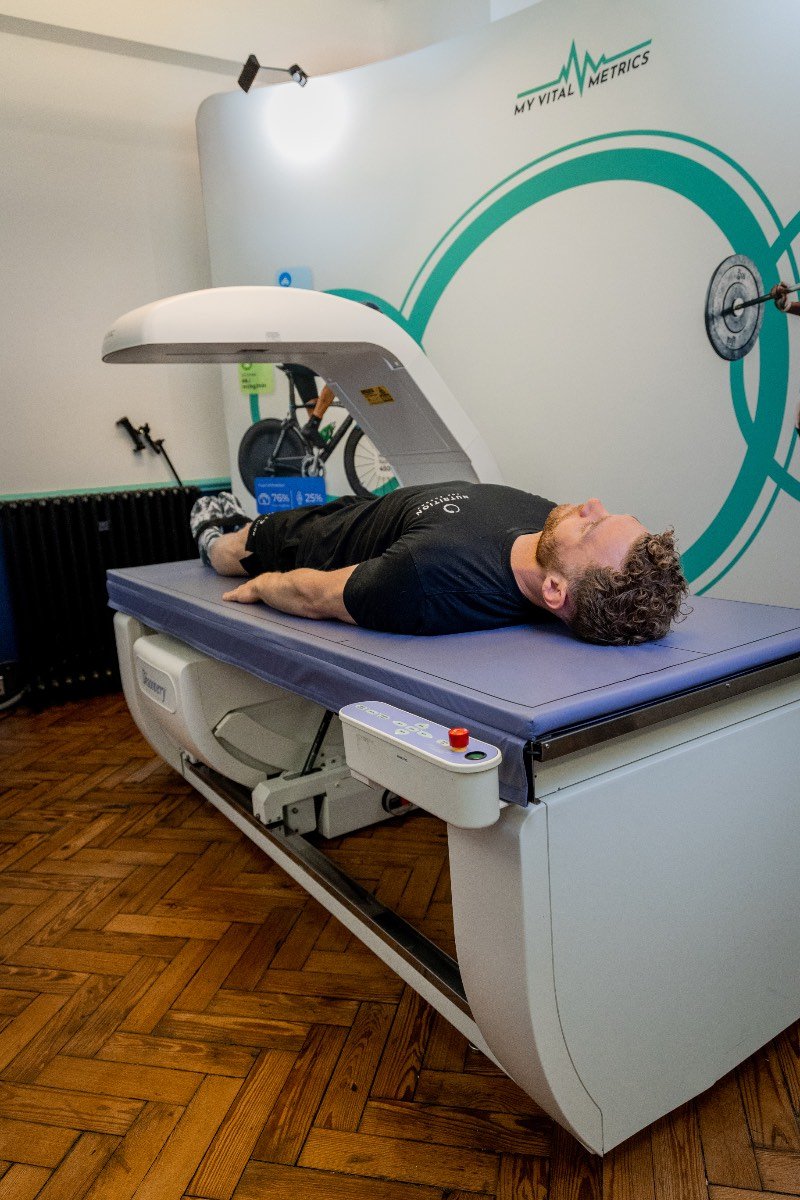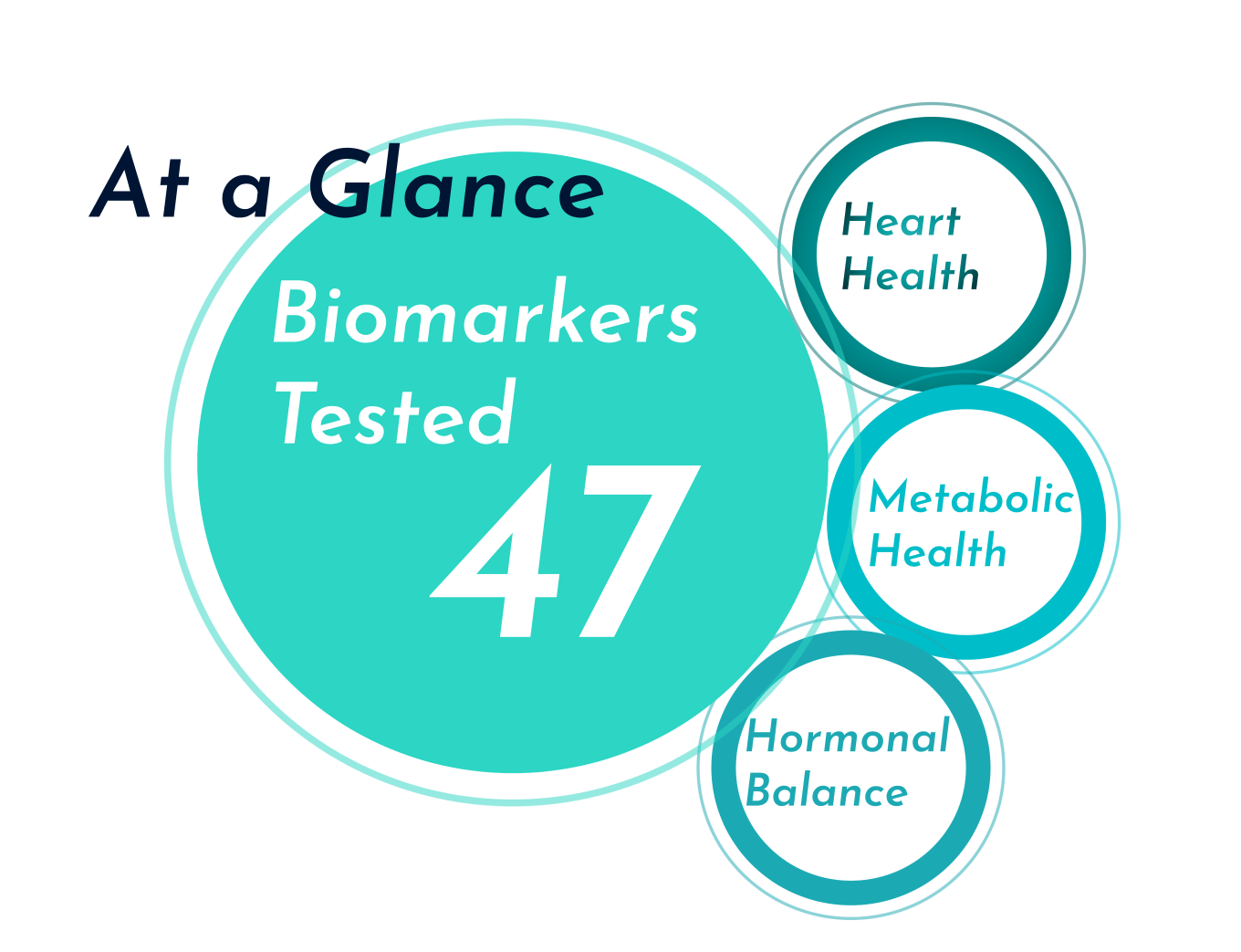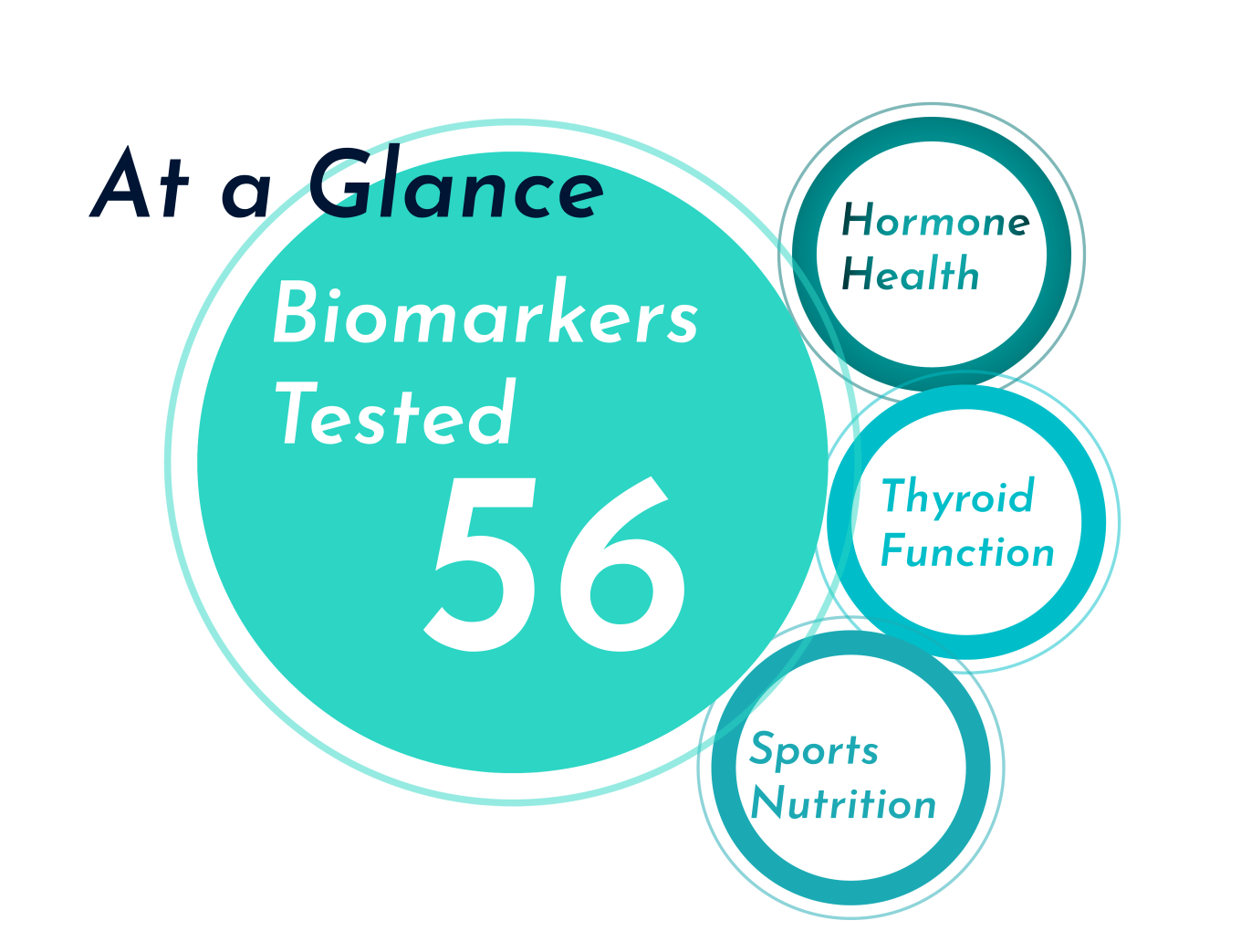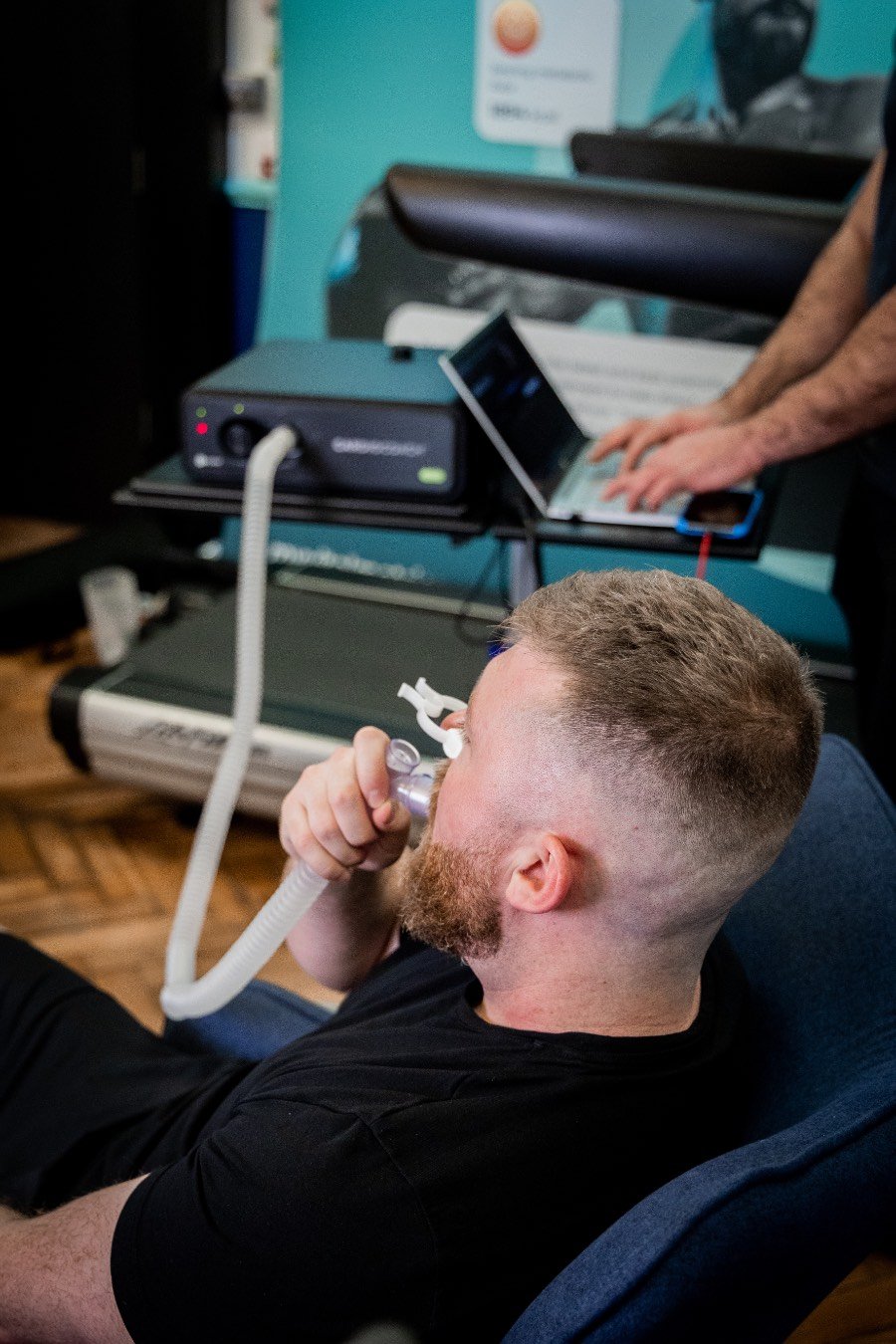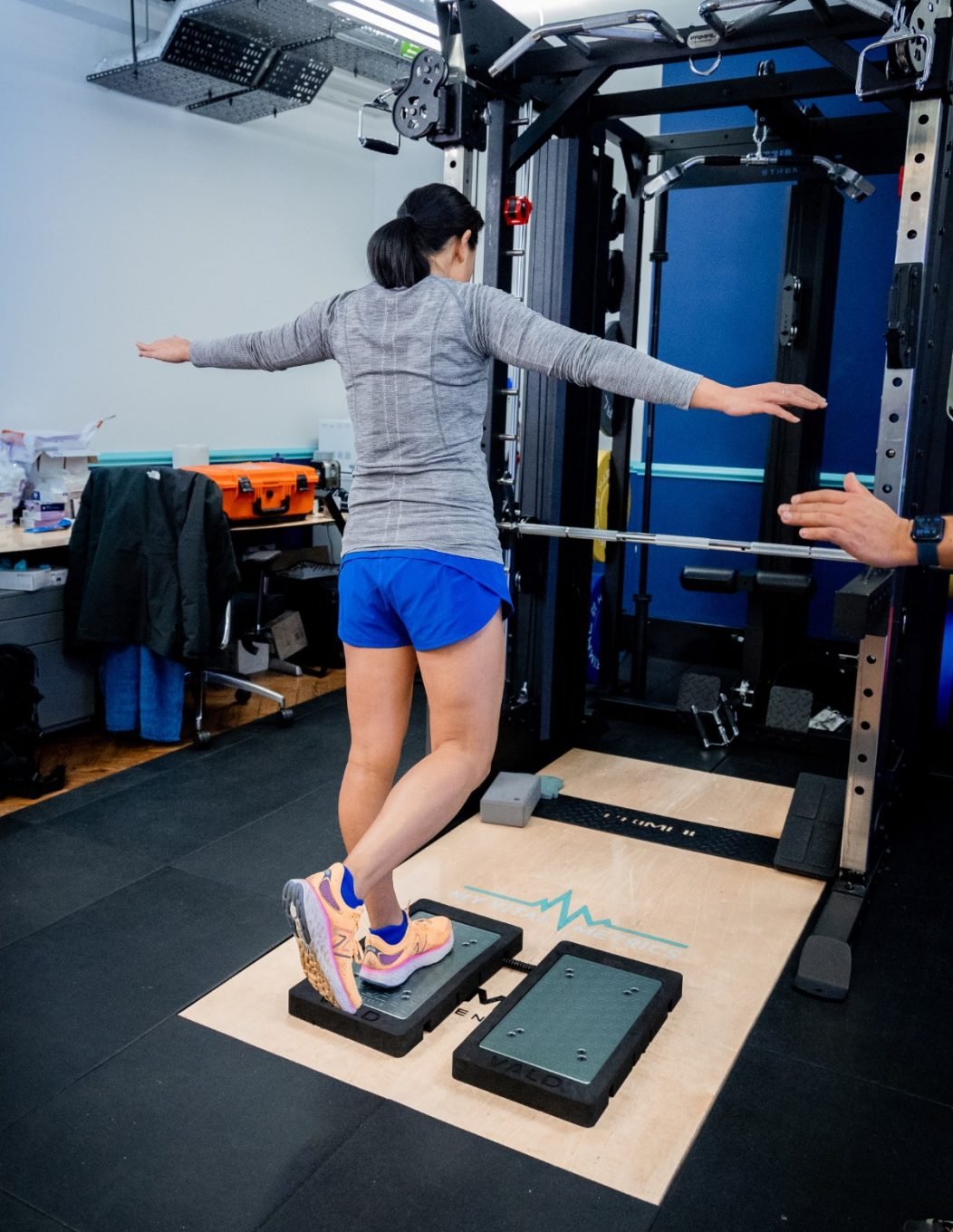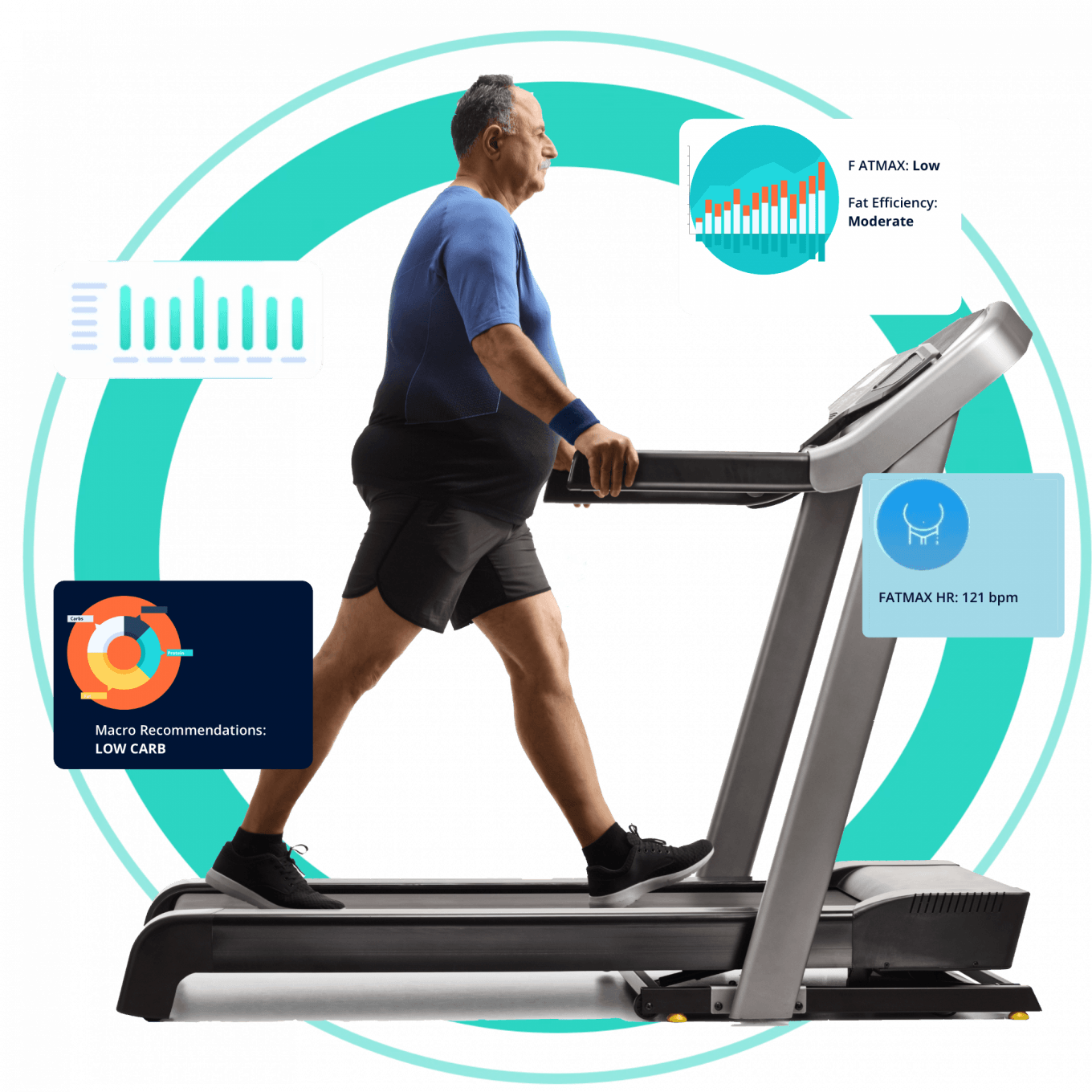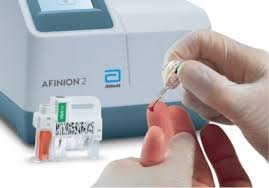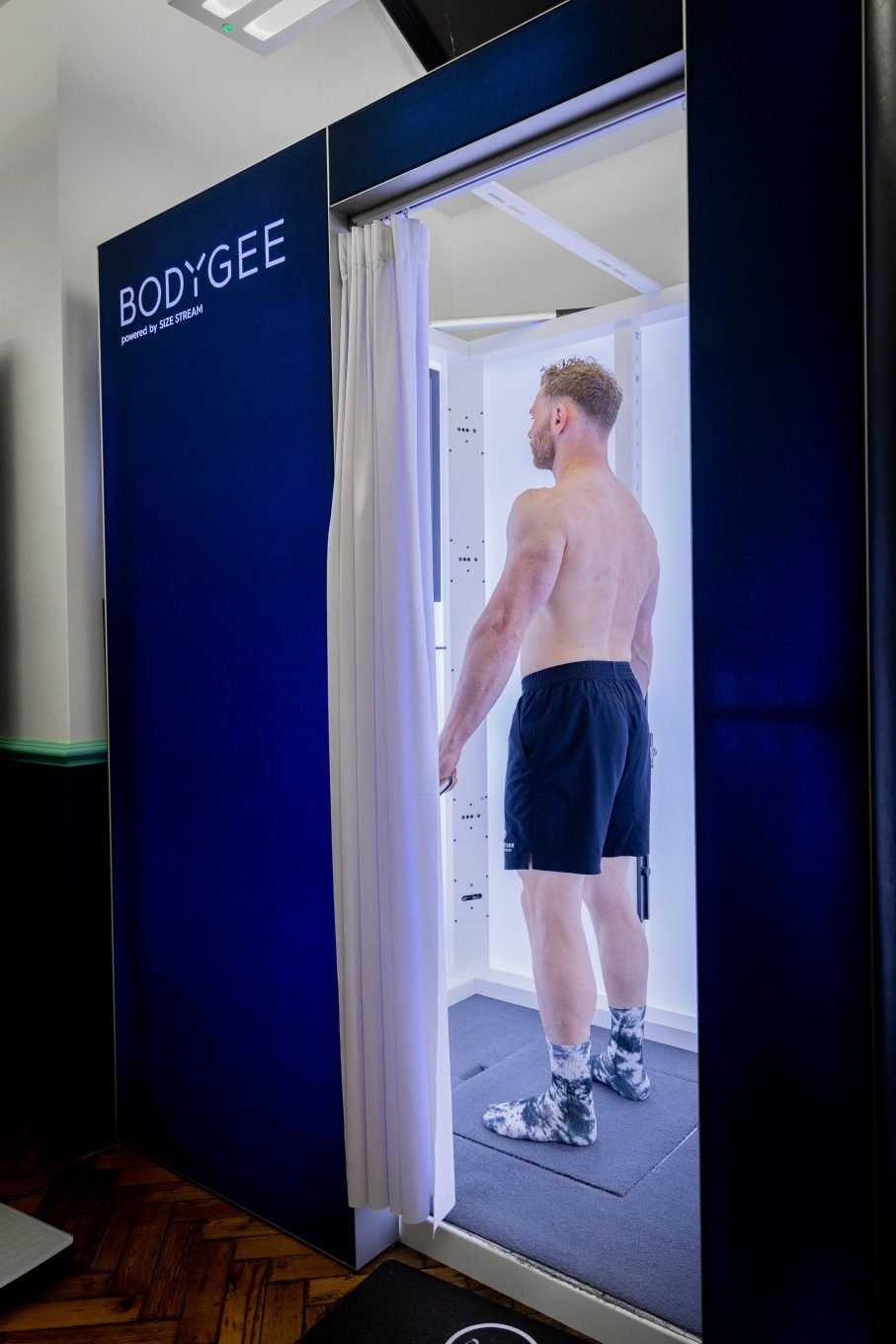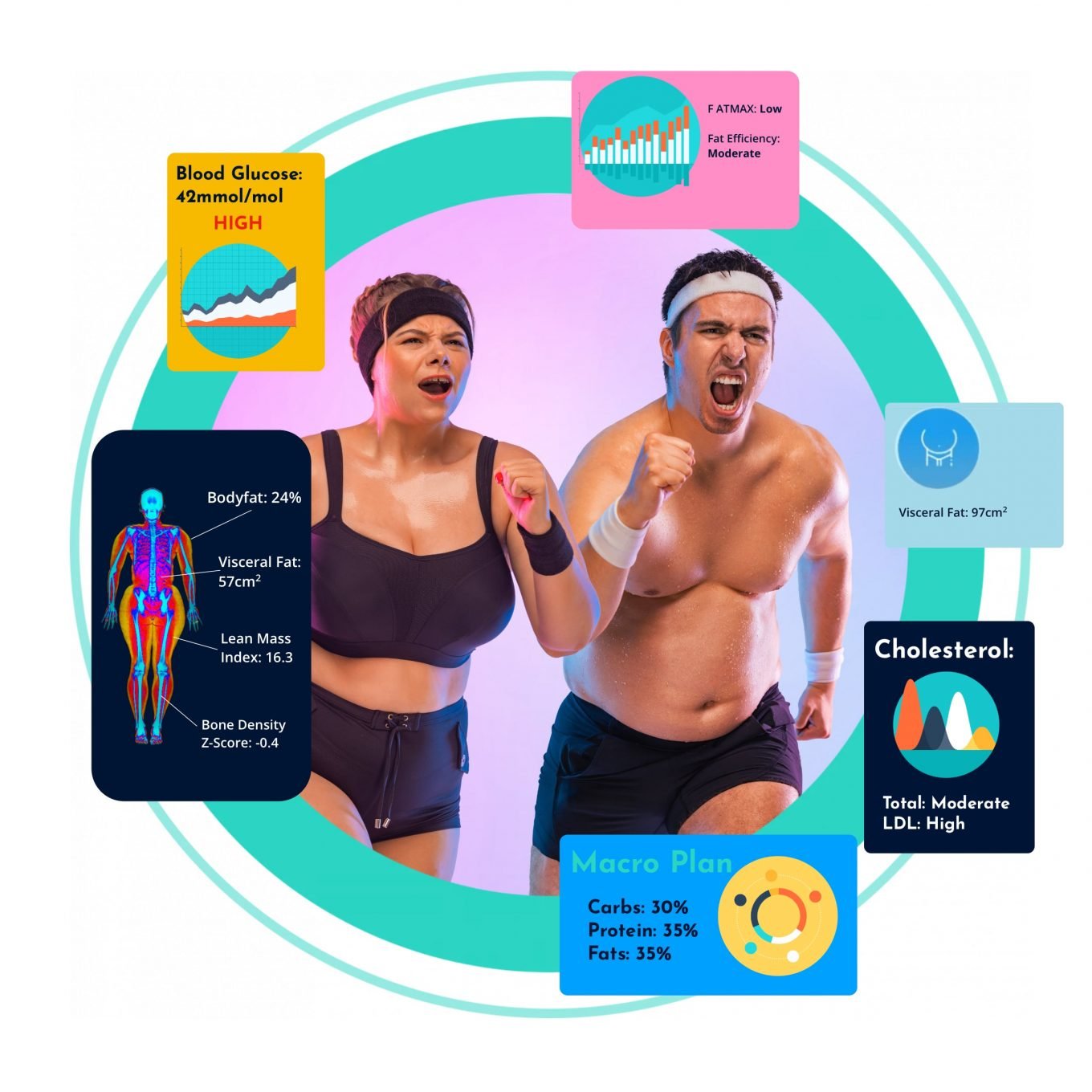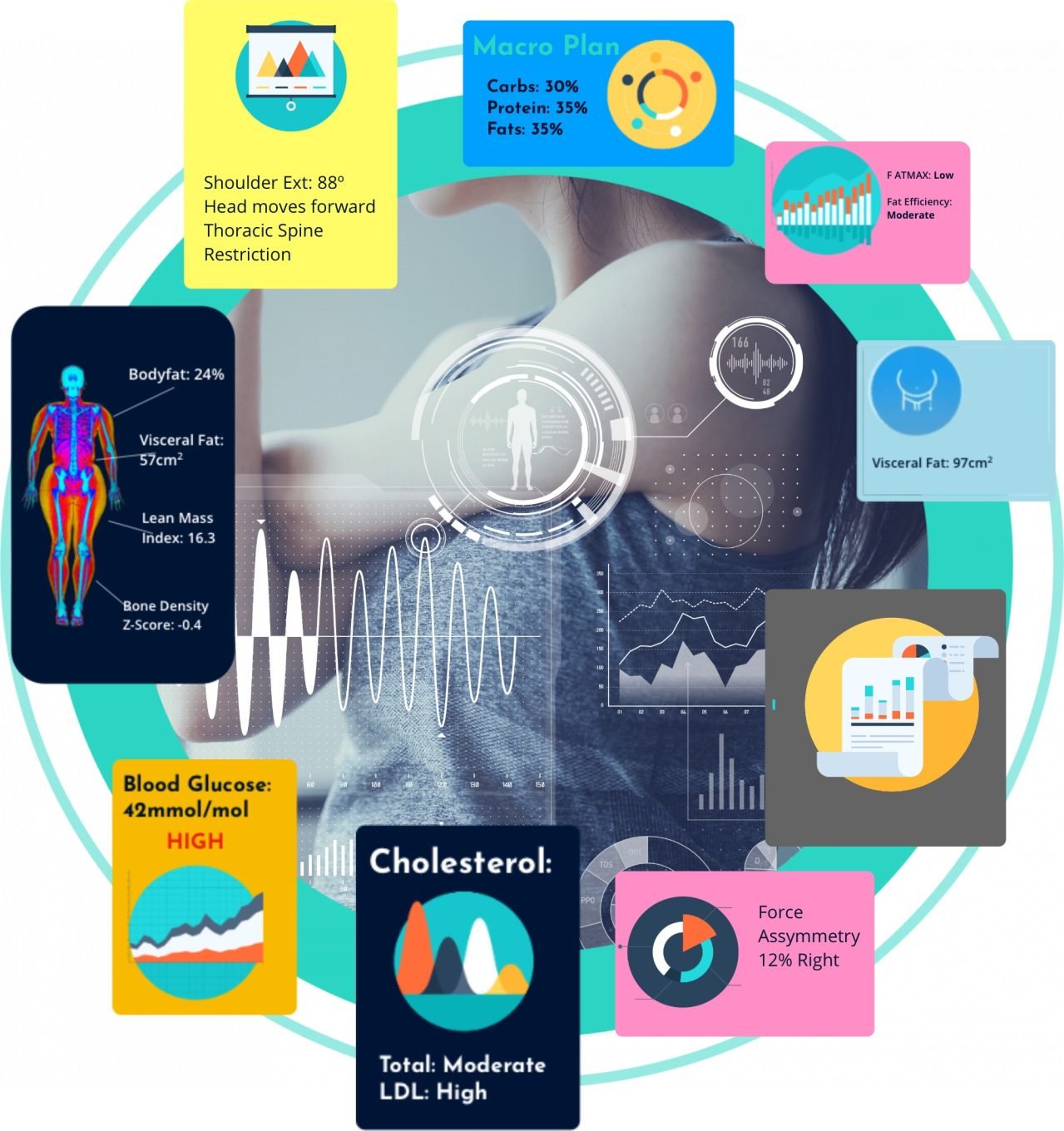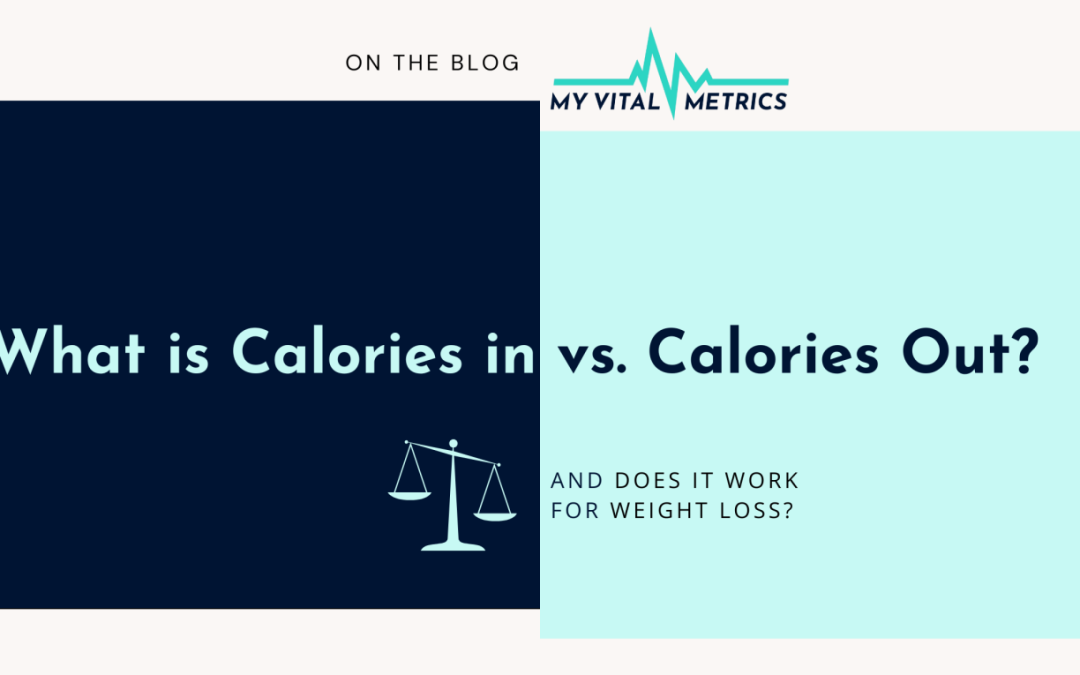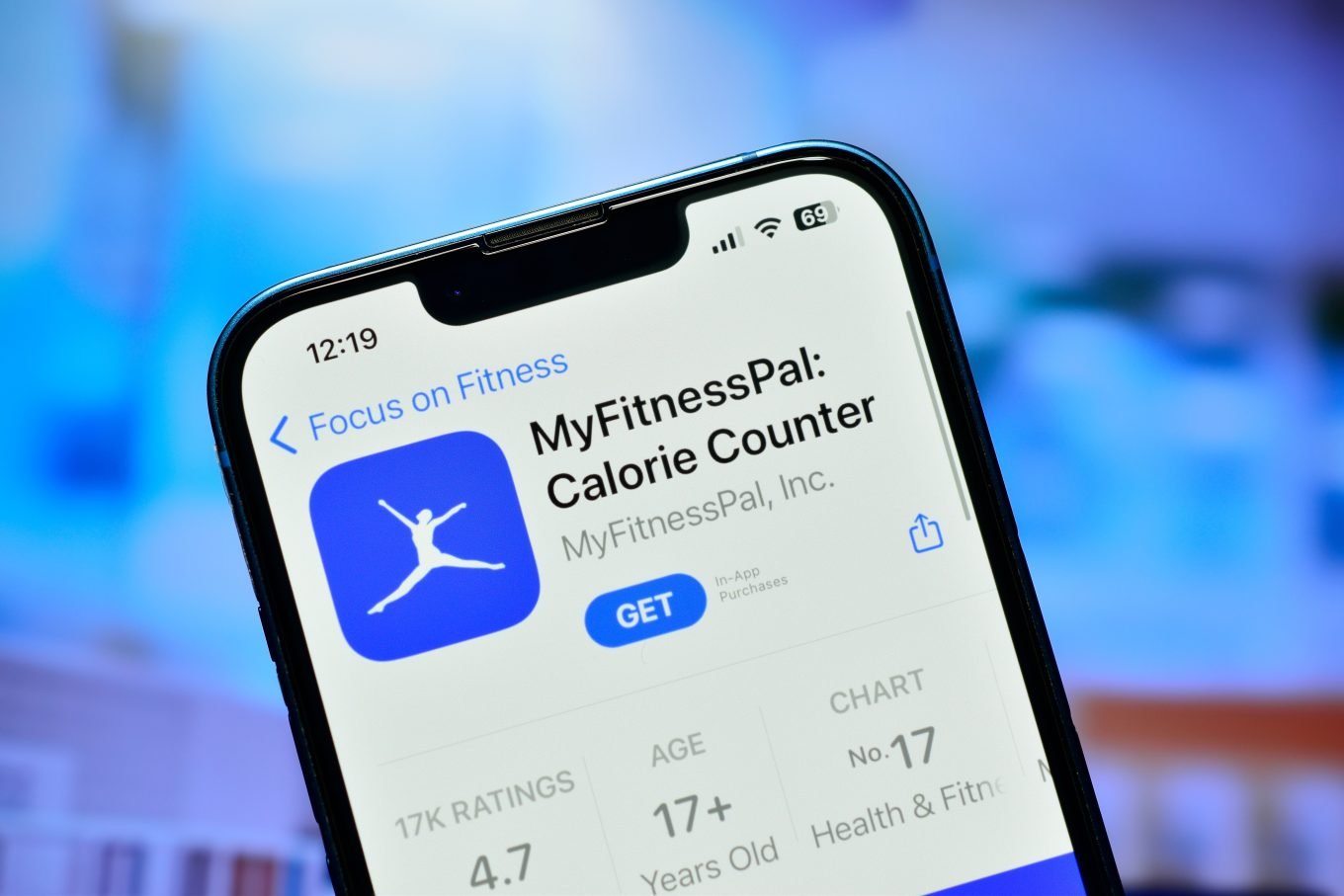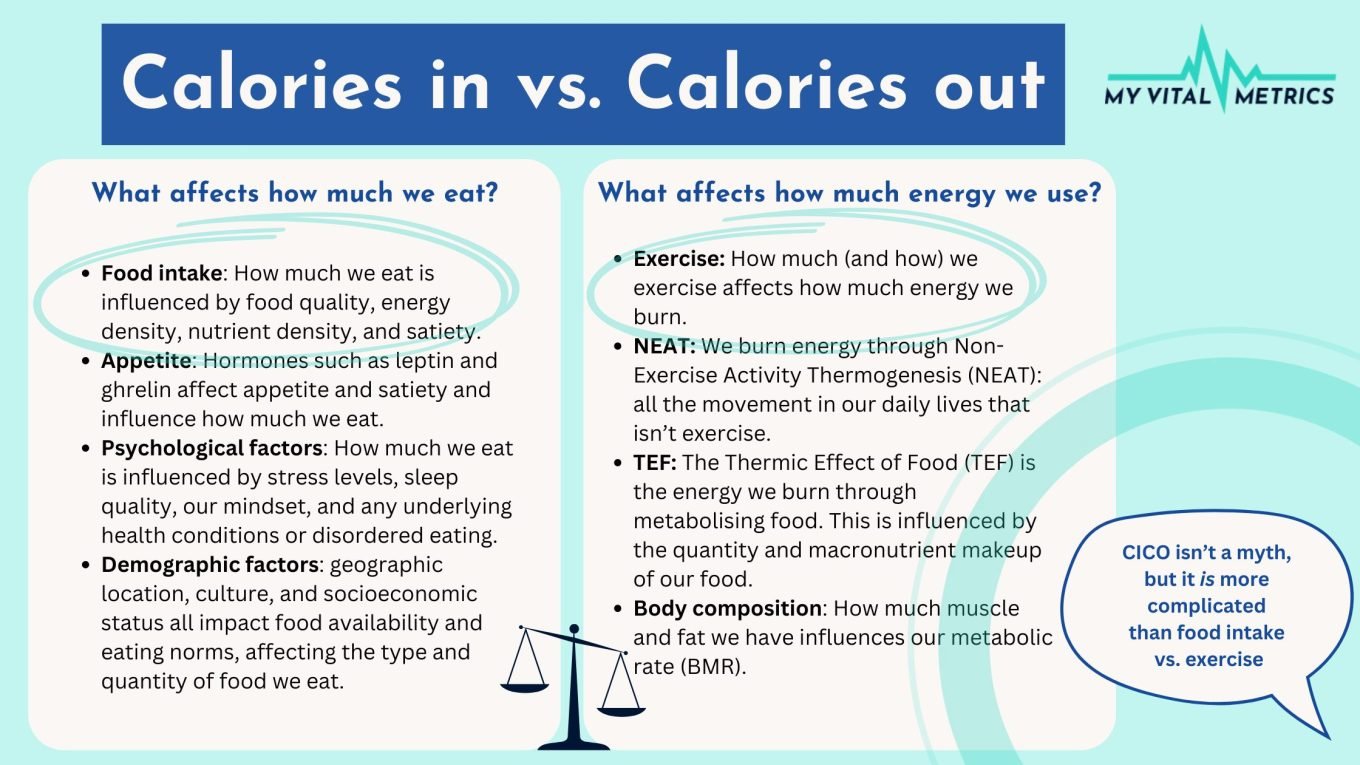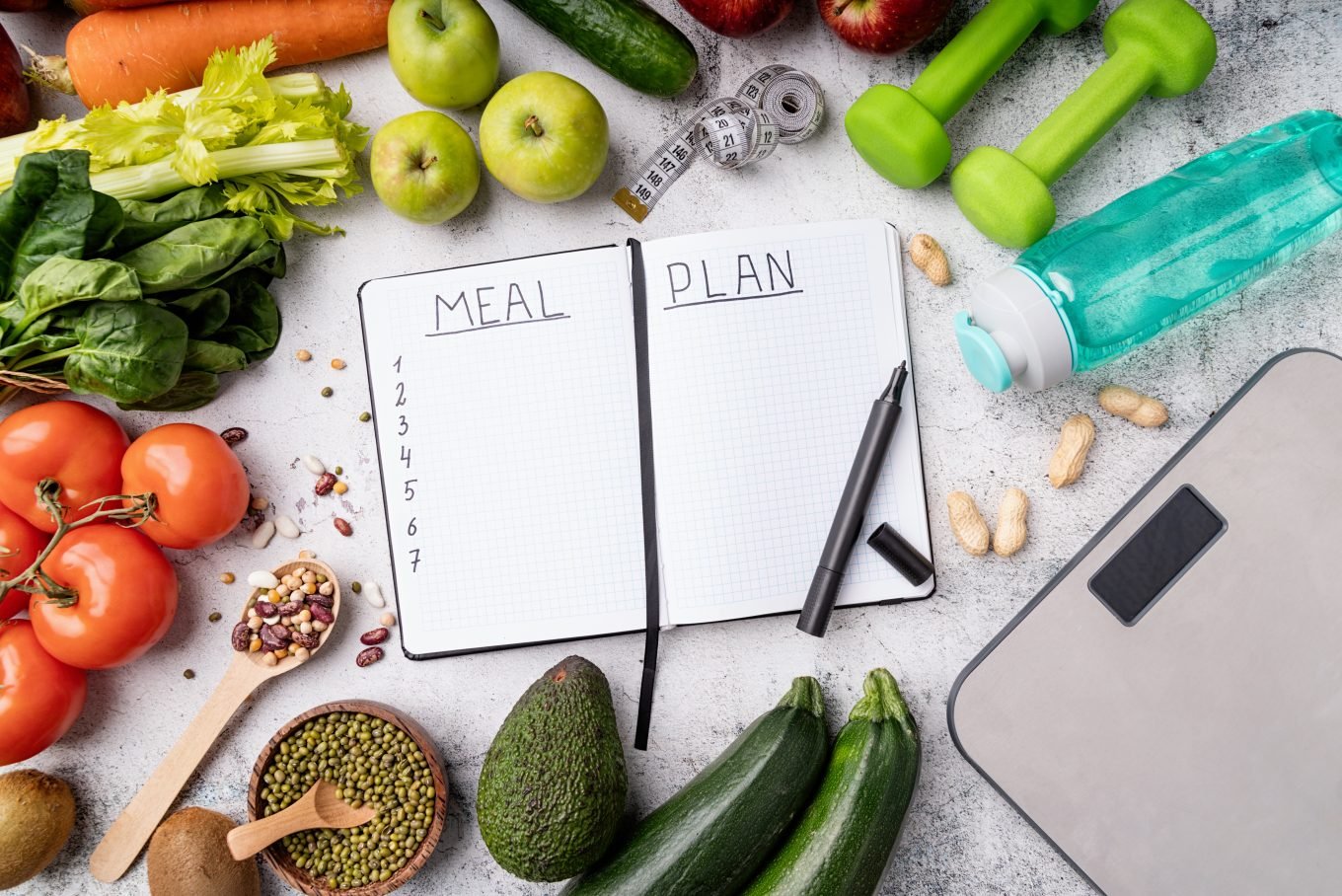Successful weight loss requires two key ingredients: accuracy and consistency.
Accuracy starts with calculating:
- How many calories you’re burning each day
- How many calories you’re taking in each day
As we’ve seen in the discussions above, these two numbers can be hard to pin down. Online calorie calculators only take into account very minimal information – typically your weight, height, sex, age, and activity level – before producing a generalised calorie recommendation. For many people, this equation doesn’t provide information that’s specific enough to them to formulate an appropriate plan and produce the weight loss results they’re looking for. This can be disheartening, impacting compliance and leading to questions about the efficacy of CICO for weight loss. (For more on this, check out our blog: Top 8 Reasons Your Calorie Deficit Isn’t Working).
The solution to this is to accurately calculate the energy your body uses each day and to use this to set your daily calorie goal.
Accurately calculate your calorie goal: How to create a calorie deficit
Creating a calorie deficit starts by knowing how many calories you use.
The number of calories you burn daily is known as your TDEE (total daily energy expenditure). This number is made up of:
- BMR (Basal Metabolic Rate): The calories you burn at rest.
- TEF (thermic effect of food): The calories you burn from processing food.
- TEA (thermic effect of activity): The calories you burn from activity.
Once you know your TDEE you can decide on a calorie deficit (for example, 500kcals per day), and subtract that from your TDEE to get your calorie goal. This is the number of calories you can eat in a day while maintaining the deficit you’ve chosen.
For example, if you have a TDEE of 2000 kcal, a 500 kcal deficit would give you a daily calorie goal of 1500 kcal.
You can accurately calculate your BMR and TDEE by using the My Vital Metrics TDEE calculator. Unlike other online calorie calculators, this tool provides options to:
- Input data from a DEXA scan
- Input data from an RMR test
- Provide detailed info on your daily activity, exercise, and sleep
It’s important to ensure your TDEE is accurate. Online BMR calculators can give inaccurate figures, leading to failed weight loss attempts and a belief that CICO “doesn’t work”. Having the right information at your fingertips is the best way to set yourself up for weight loss success.
Your metabolic rate is highly linked to body composition (specifically how much muscle you have). This means that a DEXA scan for body composition can be a great way to get an accurate RMR figure and ensure you’re working with the right number. For more info on how a DEXA scan can help you lose weight, be sure to check out our blog on How to Lose Fat with a Dexa Scan.
Some form of calorie/intake tracking
Do I have to track calories to lose weight?
The answer is no, but knowing how much you are eating will vastly improve your chances of hitting your weight loss goal.
There are plenty of reasons for not wanting to track calories, from limited time to do so to a history of an eating disorder or disordered eating habits. Counting calories may not be the right choice for everyone, and there are plenty of other ways to make healthy choices.
However, when it comes to calculating your energy balance with calories in vs calories out, this is nearly impossible to achieve without at least a period of detailed calorie tracking. Research shows that adults may underestimate their calorie intake by as much as 300%. Tracking your intake (including all food, snacks, and beverages) is the best way to accurately assess your daily caloric intake and ensure you’re hitting your calorie goal.
If you’re working with a calorie deficit, tracking your calories, and still not losing weight, there are a few possible culprits:
- It’s common to underestimate portions. Measuring your food (rather than “eyeballing”) can help avoid this.
- Not tracking single bites, tastes, licking the spoon – particularly for calorie-dense foods.
- Waiting until the end of the day to track foods (leading to forgetfulness and less accurate tracking).
- Not tracking beverages (including alcohol, coffee, and soft drinks)
- Calorie labels can legally be inaccurate by up to 20%. Remember that your tracked calories are at best an estimate, and adjust as needed.
Tracking your intake does more than count calories – it can also highlight trends in your eating. By tracking the foods you regularly eat, you can spot patterns and identify any macro or micronutrients you might be deficient in, and take steps to correct this.
Factors that affect CICO
If you’re not seeing results (or even if you are), it’s worth considering whether any of the following factors could be limiting the effects of your hard work.
Sleep
Sleep is crucial to weight loss. Research shows that consistently getting less than 6 hours of sleep per night is associated with a higher BMI, weight gain, and poor health outcomes. Similarly, getting poor sleep is also linked to a higher consumption of high-calorie foods high in sugar and/or fat.
Getting sufficient, high-quality sleep helps regulate hunger and satiety, making it easier to stick to your calorie deficit and reach your weight loss goal.
Stress management
We all deal with stress as a part of life, but long-term stress (known as chronic stress) can have a big impact on our weight and attempts to change it.
High stress is linked to difficulty losing weight, insulin resistance, and metabolic changes. Many causes of high stress (such as work, family, or illness) can also limit the time and energy we have to exercise and eat well, further impacting our ability to lose weight.
Stress management techniques have been shown to have a positive effect on weight loss, particularly in those struggling with Binge Eating Disorder (BED). Incorporating strategies such as regular exercise, meditation, yoga, and engaging in activities you enjoy can be a great way to work on lowering your stress levels.
Macronutrient balance
The best macronutrient ratio for weight loss is another highly debated topic.
Research shows that, overall, the number of calories you consume is vastly more important than what macros those calories come from. However, the macronutrient breakdown of your diet can influence:
- How full you feel
- Your metabolic rate
- Your athletic performance
- Muscle recovery after exercise
With this in mind, many professionals recommend a well-balanced diet that includes a balance of carbohydrates, proteins, and healthy fats. A balance of 40% carbs, 30% protein, and 30% fat can be a great macro target for most people.
If you’re just starting out with weight loss, nailing your calorie goal is going to be more important than worrying about a precise macronutrient breakdown. However, as you get comfortable with tracking your intake, tracking your macros can give further insight into your diet. Take note of which foods contribute to satiety, and which leave you wishing you had more calories to work with. If you’re constantly hungry, increasing the amount of protein and healthy fats you’re consuming can help combat that. In other instances, you may be in too great of a deficit and need to increase your overall calories.
Nutritional deficiencies
Nutritional deficiencies can leave you hungry and tired – hardly a winning weight loss combo.
Correcting any deficiencies can leave you with more energy and improve your workout performance. Eating a wide variety of foods (including a mixture of fruits and vegetables) helps to ensure you consume a range of micronutrients. If you suspect a deficiency that isn’t being helped by diet alone, testing can give you more information.
Common deficiencies such as vitamin D deficiency and iron deficiency anaemia can be easily corrected with over-the-counter supplements or prescribed medication. As always, be sure to consult your medical provider before taking any new supplements or medications.
Hormone levels
Hormones play a complex role in weight management and are frequently blamed for failed weight loss attempts.
There are a few common ways in which your hormonal balance could be affecting your weight loss progress, including:
- Thyroid hormones: In hypothyroidism, low levels of thyroid hormones T3 and T4 can contribute to metabolic changes and weight gain.
- Sex hormones: Both high and low levels of sex hormones such as testosterone and oestrogen can affect both weight and body fat.
- Insulin: Insulin resistance (both in those with and without diabetes) can contribute to weight gain.
All of these hormonal imbalances are worth investigating in consultation with your medical provider. However, it’s key to note that while hormonal imbalances can affect and inhibit weight loss, they don’t change the validity of the CICO equation – they simply alter the numbers on one or both sides.
Exercise and non-exercise daily activity
One of the best ways to work towards weight loss is to increase your amount of overall activity. This can include both:
- Targeted exercise: What we typically think of when we hear the word “exercise” – lifting weights, running, cycling, engaging in sports, or going to the gym.
- Non-exercise daily activity: All the other movement in our day, such as standing, walking, climbing stairs, housework, or commuting.
It’s important to remember that movement doesn’t have to be a workout to “count”. Both types of activity contribute to the calories in calorie out equation, and increase your calorie burn. Plus, exercise has the added bonus of decreasing stress, improving sleep, and contributing to a feeling of self efficacy.
An additional benefit of increasing your activity level is that it can allow you to maintain a calorie deficit while eating more.
For example, a TDEE of 2000 kcal with a 500 kcal deficit would give a 1500 kcal calorie goal.
However, increasing our exercise and daily activity could give us a TDEE of 2500 kcal. That same 500 kcal deficit would then give us a 2000 kcal calorie goal – much easier to stick to.
Calculate your exact calorie needs to set yourself up for weight loss success
